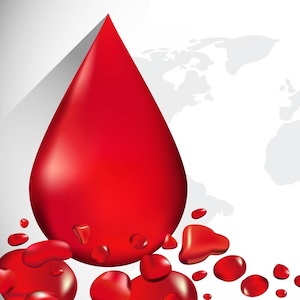Mini-reviews
Vol. 4 No. 1 (2025)
Unveiling the “common soil” of cardiovascular disease and cancer

Publisher's note
All claims expressed in this article are solely those of the authors and do not necessarily represent those of their affiliated organizations, or those of the publisher, the editors and the reviewers. Any product that may be evaluated in this article or claim that may be made by its manufacturer is not guaranteed or endorsed by the publisher.
All claims expressed in this article are solely those of the authors and do not necessarily represent those of their affiliated organizations, or those of the publisher, the editors and the reviewers. Any product that may be evaluated in this article or claim that may be made by its manufacturer is not guaranteed or endorsed by the publisher.
Received: 15 December 2024
Accepted: 27 January 2025
Accepted: 27 January 2025
991
Views
275
Downloads
Similar Articles
- Alice Lipari, Esmeralda Capristo, Antonietta Ferretti, Erica De Candia, Anticoagulation in obese patients: challenges and strategies , Bleeding, Thrombosis and Vascular Biology: Vol. 4 No. 3 (2025)
- CO14 | Inflammation and fibrinolysis biomarkers as predictors of cancer risk in healthy subjects: results from the hypercan study , Bleeding, Thrombosis and Vascular Biology: Vol. 4 No. s1 (2025)
- Roberta Parisi, Simona Costanzo, Romy de Laat-Kremers, Augusto Di Castelnuovo, Amalia De Curtis, Teresa Panzera, Mariarosaria Persichillo, Chiara Cerletti, Giovanni de Gaetano, Maria Benedetta Donati, Licia Iacoviello, Bas de Laat , for the Moli-sani Study Investigators, Plasma fibrinogen levels and all-cause and cause-specific mortality in an Italian adult population: results from the Moli-sani study , Bleeding, Thrombosis and Vascular Biology: Vol. 2 No. 1 (2023)
- Roger Lijnen, Désiré Collen, The key to fibrinolysis and thrombolysis , Bleeding, Thrombosis and Vascular Biology: Vol. 4 No. 3 (2025)
- CS01 | Elucidating the evil relationship of metabolic dysfunction–associated fatty liver disease with cardiovascular comorbidities: the complex interplay among hypercoagulability, inflammation and liver fibrosis , Bleeding, Thrombosis and Vascular Biology: Vol. 4 No. s1 (2025)
- CO02 | Hepatic fibrosis as predictor of cancer-associated thrombosis in patients with intrahepatic cholangiocarcinoma , Bleeding, Thrombosis and Vascular Biology: Vol. 4 No. s1 (2025)
- Eleonora Petito, Anna Maria Mezzasoma, Emanuela Falcinelli, Chiara Conti, Erica De Candia, Raimondo De Cristofaro, Silvia Sorrentino, Gian Marco Podda, Mariangela Scavone, Anna Falanga, Marina Marchetti, Luca Barcella, Stefania Basili, Lucia Stefanini, Andrea Boccatonda, Laura Contino, Patrizia Sciancalepore, Igor Florio, Egidio Imbalzano, Rossella Marcucci, Angela Rogolino, Patrizia Noris, Marta Panella, Rita Santoro, Maria Costanza Turi, Gaetano Vaudo, Rosa Curcio, Paolo Gresele, Persistence of functional anti-PF4 antibodies and neutrophil activation in vaccine-induced immune thrombotic thrombocytopenia , Bleeding, Thrombosis and Vascular Biology: Vol. 4 No. 3 (2025)
- Benedetta Izzi, Simona Costanzo, Alessandro Gialluisi, Amalia De Curtis, Sara Magnacca, Teresa Panzera, Augusto Di Castelnuovo, Maria Benedetta Donati, Chiara Cerletti, Marc F. Hoylaerts, Giovanni de Gaetano, Licia Iacoviello, *on behalf of the Moli-sani Study Investigators, Platelet distribution width is associated with cardiovascular mortality in an adult general population , Bleeding, Thrombosis and Vascular Biology: Vol. 2 No. 3 (2023)
- PO68 | Whole blood hypercoagulable profiles in a patient with markedly elevated lipoprotein(A) plasma levels and thrombotic complications: a case report , Bleeding, Thrombosis and Vascular Biology: Vol. 4 No. s1 (2025)
- Renato Marino, Silvia Linari, Marzia Leotta, Antonio Coppola, Chiara Biasoli, Maria Elisa Mancuso, Flora Peyvandi, Cristina Santoro, Ezio Zanon, Rita Carlotta Santoro, Diagnostic and management practices for inherited fibrinogen disorders: a nationwide survey of Italian Hemophilia Treatment Centers , Bleeding, Thrombosis and Vascular Biology: Vol. 4 No. 3 (2025)
1-10 of 221
Next
You may also start an advanced similarity search for this article.
Most read articles by the same author(s)
- Augusto Di Castelnuovo, Licia Iacoviello, Moving beyond p-value , Bleeding, Thrombosis and Vascular Biology: Vol. 1 No. 1 (2022)
- Benedetta Izzi, Simona Costanzo, Alessandro Gialluisi, Amalia De Curtis, Sara Magnacca, Teresa Panzera, Augusto Di Castelnuovo, Maria Benedetta Donati, Chiara Cerletti, Marc F. Hoylaerts, Giovanni de Gaetano, Licia Iacoviello, *on behalf of the Moli-sani Study Investigators, Platelet distribution width is associated with cardiovascular mortality in an adult general population , Bleeding, Thrombosis and Vascular Biology: Vol. 2 No. 3 (2023)
- Roberta Parisi, Simona Costanzo, Romy de Laat-Kremers, Augusto Di Castelnuovo, Amalia De Curtis, Teresa Panzera, Mariarosaria Persichillo, Chiara Cerletti, Giovanni de Gaetano, Maria Benedetta Donati, Licia Iacoviello, Bas de Laat , for the Moli-sani Study Investigators, Plasma fibrinogen levels and all-cause and cause-specific mortality in an Italian adult population: results from the Moli-sani study , Bleeding, Thrombosis and Vascular Biology: Vol. 2 No. 1 (2023)
- Giovanni de Gaetano, Chiara Cerletti, Licia Iacoviello, Maria Benedetta Donati, The night of randomized clinical trials where all patients are black: a need to estimate variability in treatment effects , Bleeding, Thrombosis and Vascular Biology: Vol. 1 No. 1 (2022)
- Marialaura Bonaccio, Licia Iacoviello, Maria Benedetta Donati, It’s definitely time to consider diet in its ultra-processing form as a major risk factor for thrombotic vascular disorders , Bleeding, Thrombosis and Vascular Biology: Vol. 2 No. 3 (2023)
- Giovanni de Gaetano, Maria Benedetta Donati, Americo Bonanni, SISET50: trajectories of hemostasis and thrombosis in Italy 1970-2020 , Bleeding, Thrombosis and Vascular Biology: Vol. 4 No. 1 (2025)
- Maria Benedetta Donati, Medicine at the crossroads of science, compassion and ethical responsibility , Bleeding, Thrombosis and Vascular Biology: Vol. 4 No. 3 (2025)










